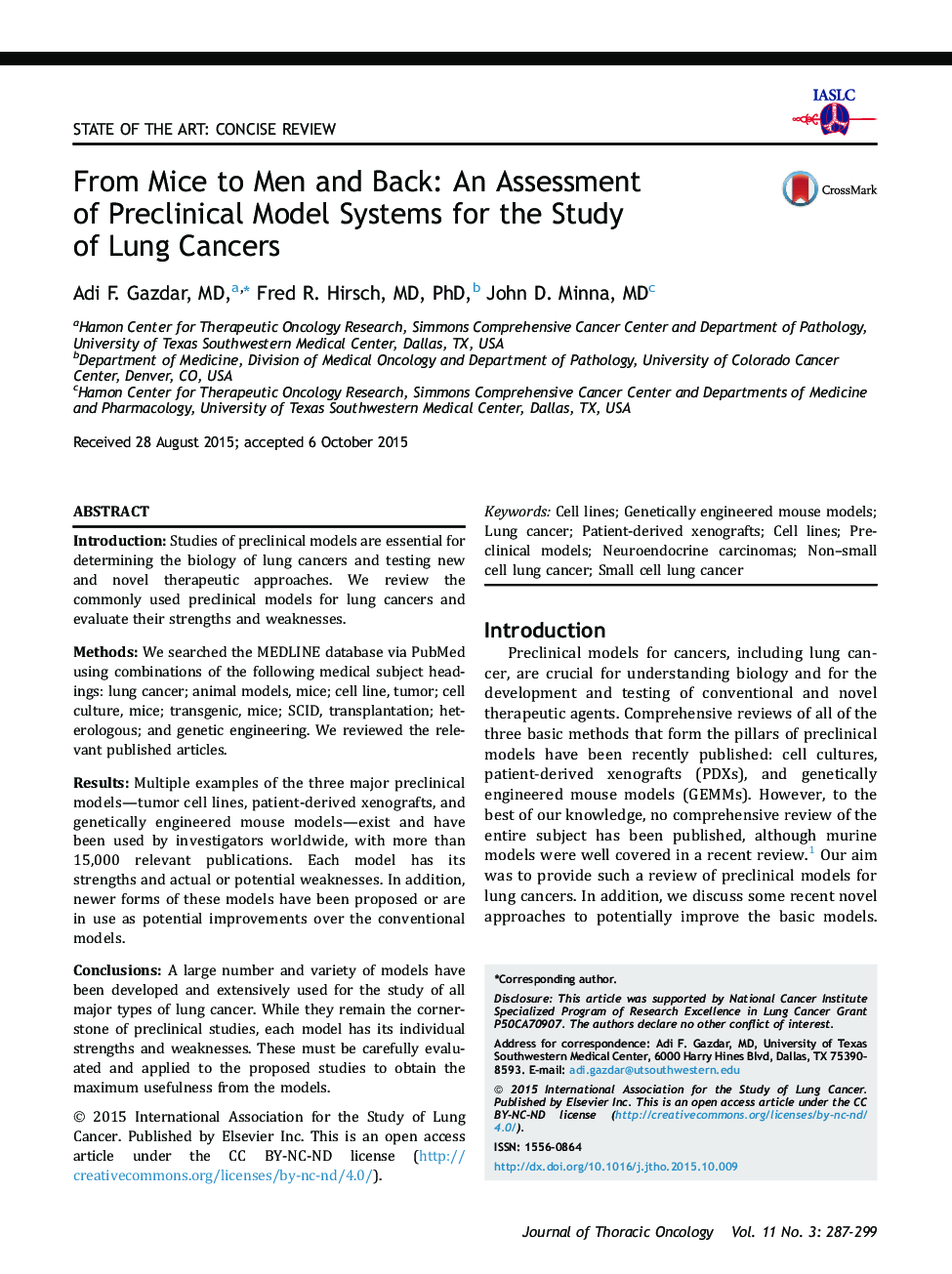| Article ID | Journal | Published Year | Pages | File Type |
|---|---|---|---|---|
| 6192563 | Journal of Thoracic Oncology | 2016 | 13 Pages |
IntroductionStudies of preclinical models are essential for determining the biology of lung cancers and testing new and novel therapeutic approaches. We review the commonly used preclinical models for lung cancers and evaluate their strengths and weaknesses.MethodsWe searched the MEDLINE database via PubMed using combinations of the following medical subject headings: lung cancer; animal models, mice; cell line, tumor; cell culture, mice; transgenic, mice; SCID, transplantation; heterologous; and genetic engineering. We reviewed the relevant published articles.ResultsMultiple examples of the three major preclinical models-tumor cell lines, patient-derived xenografts, and genetically engineered mouse models-exist and have been used by investigators worldwide, with more than 15,000 relevant publications. Each model has its strengths and actual or potential weaknesses. In addition, newer forms of these models have been proposed or are in use as potential improvements over the conventional models.ConclusionsA large number and variety of models have been developed and extensively used for the study of all major types of lung cancer. While they remain the cornerstone of preclinical studies, each model has its individual strengths and weaknesses. These must be carefully evaluated and applied to the proposed studies to obtain the maximum usefulness from the models.
